Large energy or infrastructure projects that are intended to benefit one region, country, or people usually go hand-in-hand with big sacrifices. Sometimes the sacrifice is the alteration of the configuration of huge swathes of terrain, like cutting down an ancient forest, destroying fertile land, or flooding old towns and villages.
Joseph Stalin and his comrades did not hesitate to destroy portions of Russia for the benefit of the establishment of the communist state. Their plans for building a better society meant erasing everything that was considered archaic.
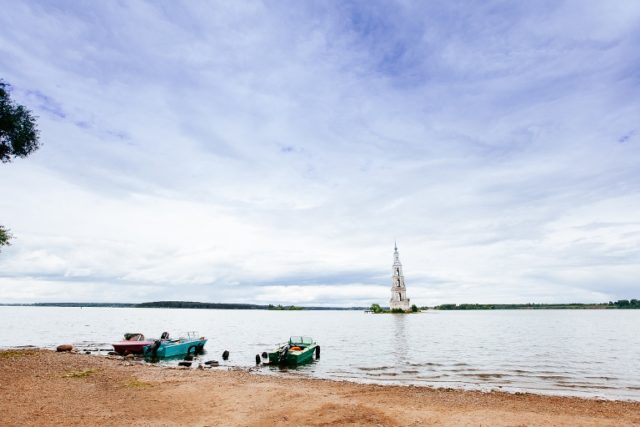
Two monasteries and large parts of the old town of Kalyazin located in the Tver Oblast in northwestern Russia, as well a fertile area of land covering approximately 96 square miles, were deliberately flooded by the waters of the Ulgrich Reservoir, a man-made lake.
Projects similar in scope to the production of this artificial lake were made by the Soviet government in order to strengthen and glorify the new Soviet Union. At least, this is the sentiment that can be found in the most positive chapters of the communists’ history books while describing the most sincere–and most naive–years of the communist era.
Inside London’s abandoned ‘secret’ railway
The area flooded by the waters of the Volga River was only a small part of the cultural destruction that, unfortunately, was the result of the rise of communism in the Soviet Union. Many historic buildings were destroyed in the name of the progress, the Communist Revolution, and the modernization of the USSR.
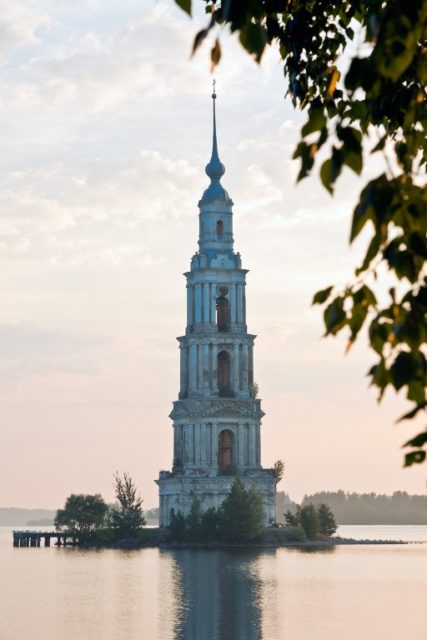
In 1939, the Soviet authorities decided to build the Uglich Dam on the Volga River as part of the Volgostroy project, creating the enormous Uglich Reservoir. This meant better boat traffic in the Volga River and better conditions for the construction of a modern power plant in the Volga water area, although it also meant flooding large areas of arable land and the destruction of old settlements. The old town of Kalyazin was one of those settlements that existed in the flood zone and was destroyed.
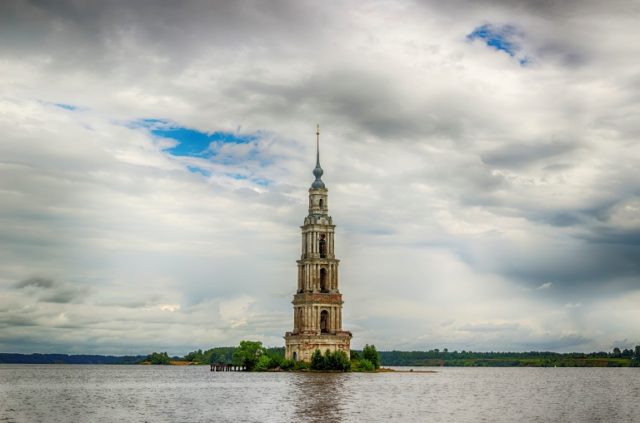
Large parts of the town were submerged. Streets, houses, the old town’s bazaar and two monasteries from the 15th and 16th centuries (Saint Nicholas Monastery and Troitsky Makariev Monastery) are now under water. All of the flooded structures were demolished by the rising waters, apart from the miraculous survival of the bell tower of Saint Nicholas Church. The authorities decided to preserve the historic building and to use it as a nautical marker and lighthouse. It is now positioned in the middle of the artificial lake and over the years it has been a symbol of the Volga River and the small town of Kalyazin.
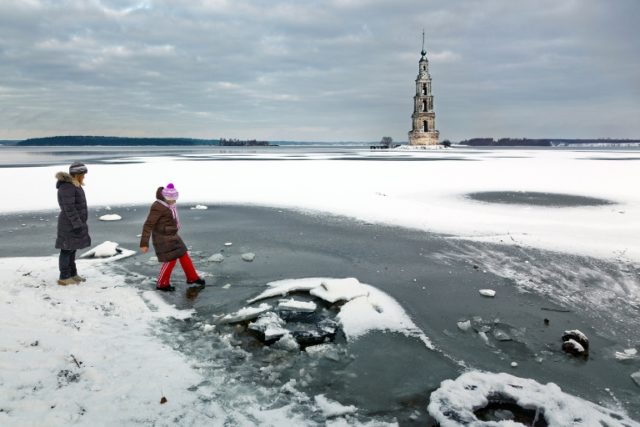
The church of Saint Nicholas was built in 1694 and has a bell tower in Neoclassical architectural style with five tiers erected between 1794 and 1800. The tower was built by Colonel Vasily Ushakov, owner of the village Nikitsky, and a team of peasant workers.
The dam of the Ulgrich Reservoir was built by prisoners, and most of them were political prisoners. During the war, this enormous project in the Volga River played a crucial role in the victory of the Soviets against the Nazis. It provided the city of Moscow with electricity in the hard days of 1941-42 during the German siege of the Soviet capital.
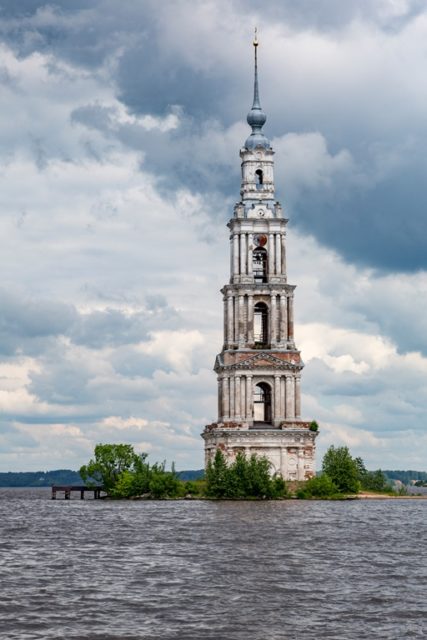
In order to prevent the collapse of the unique structure, large amounts of soil were placed around the tower to create a small man-made island. Today the interior of the tower is empty because the 12 bells and all the precious and non-precious contents were removed before the rise of the water.
On the islet, there is a small dock. The place is a popular tourist attraction and swimming spot and home to many different bird species. Sometimes the Russian Orthodox Church holds religious ceremonies there. In winter, when the lake is frozen, the bell tower can be visited on foot.
